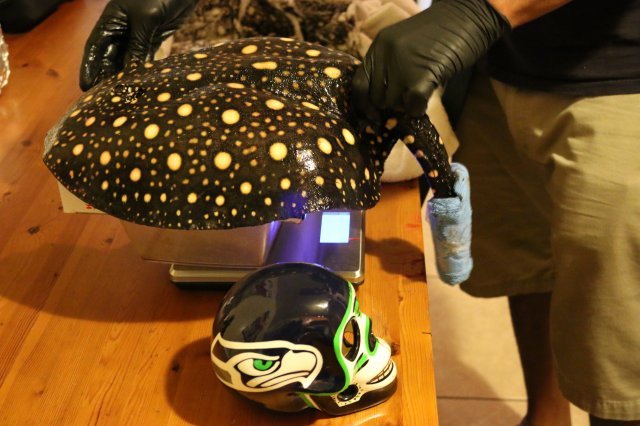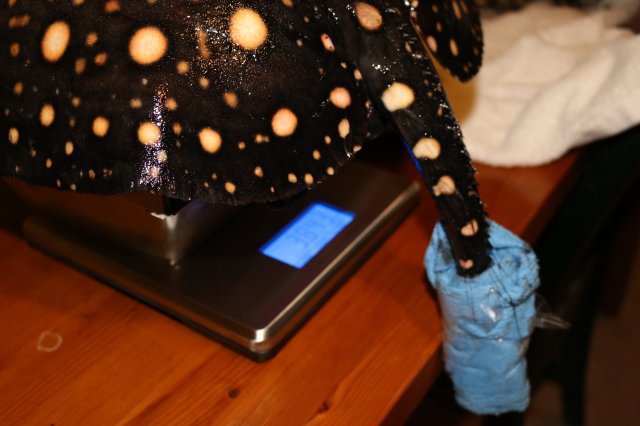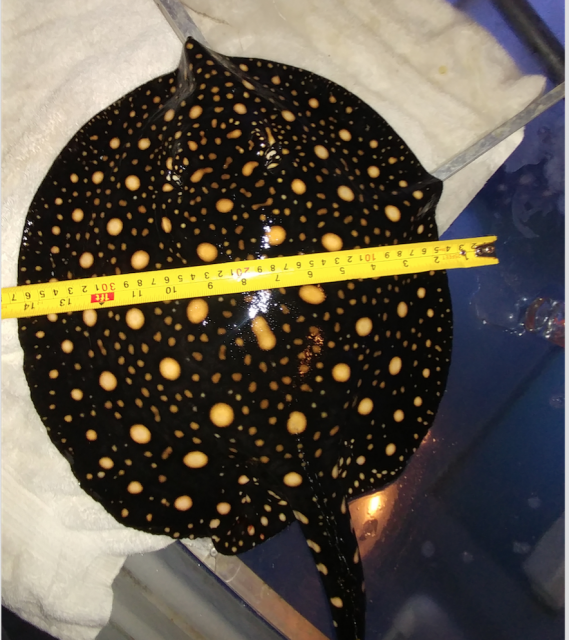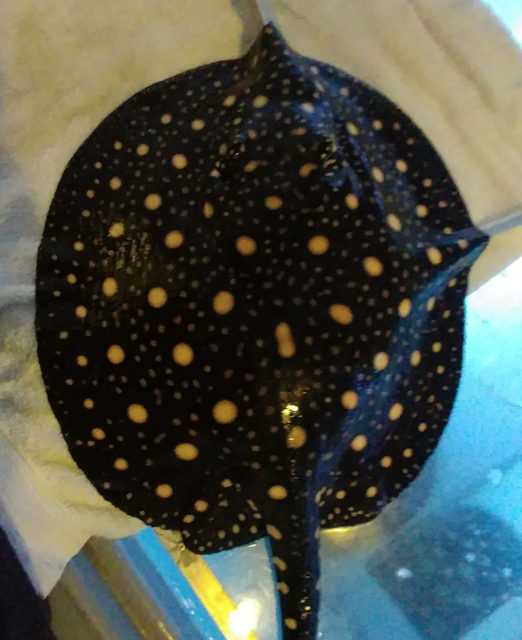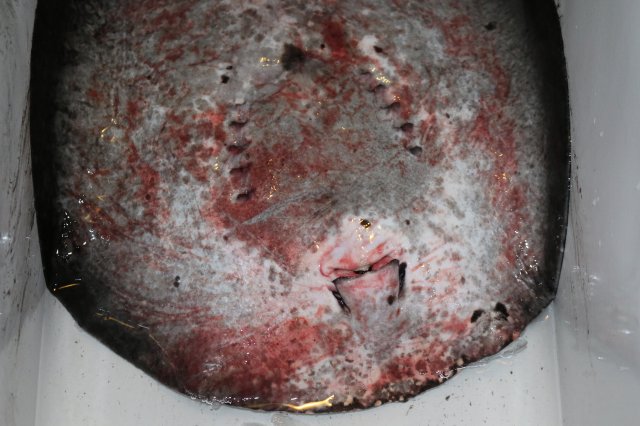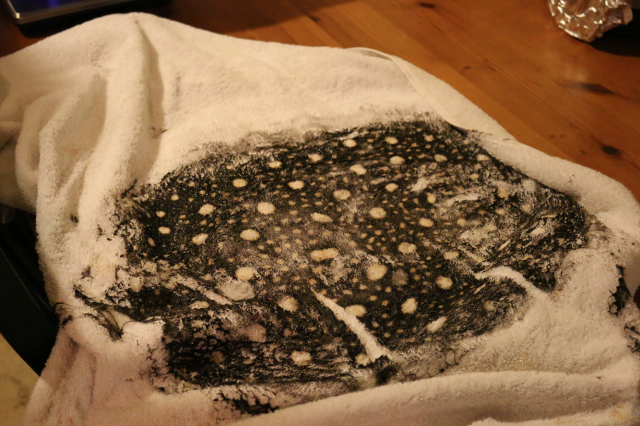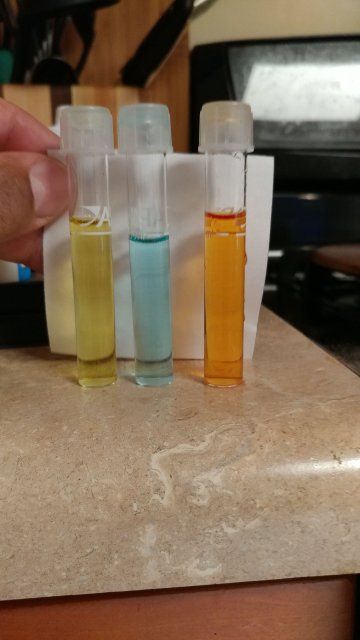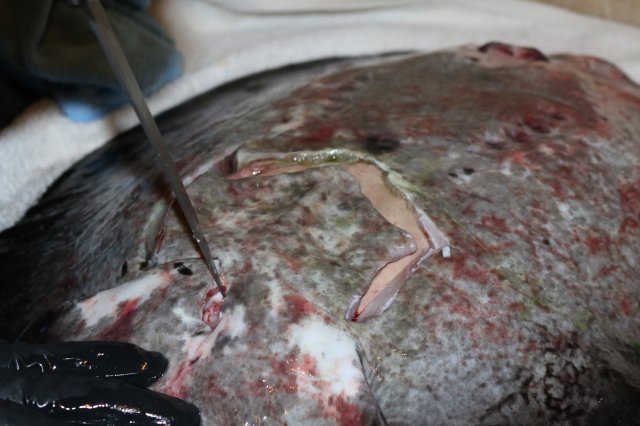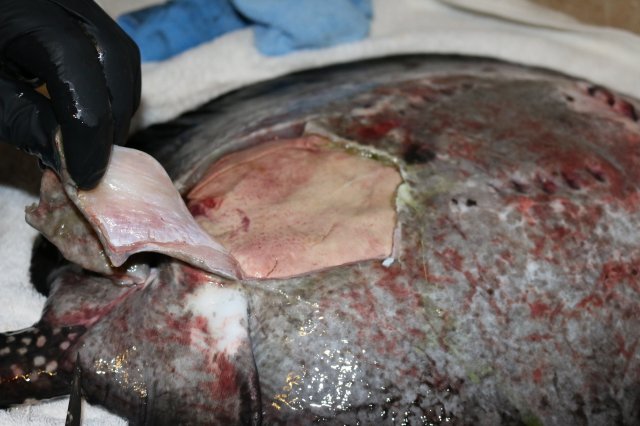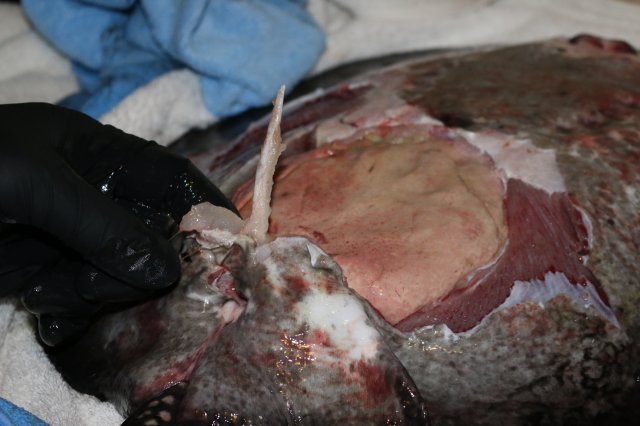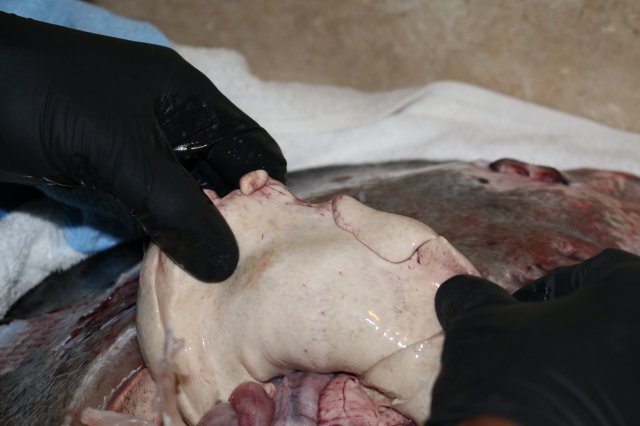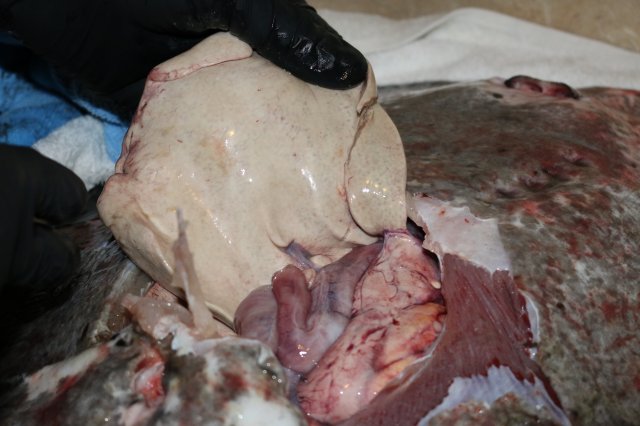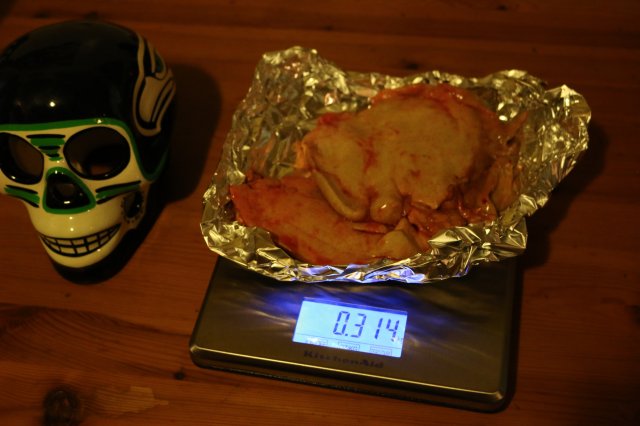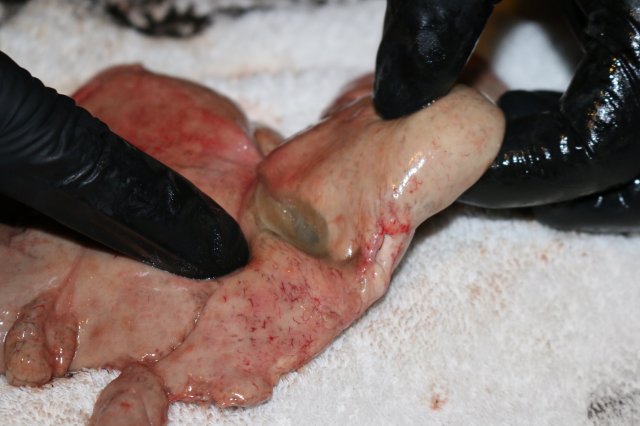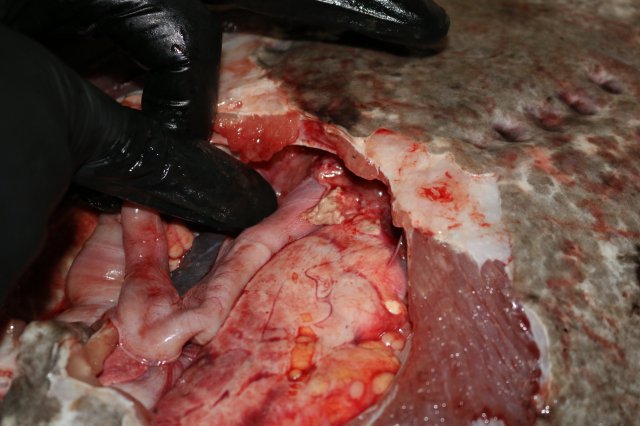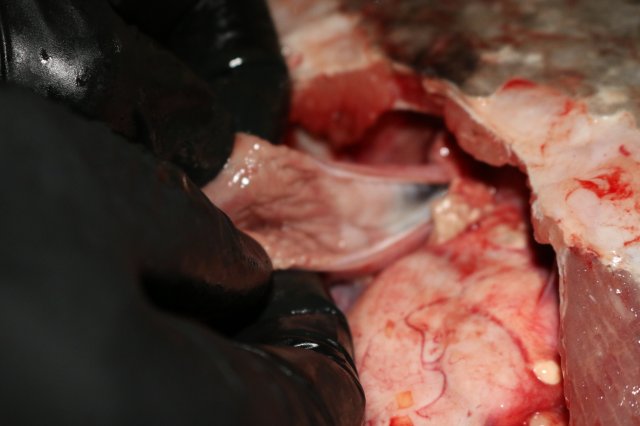*Please note there are very graphic images in this thread. Leave now if you are uncomfortable *
"Learn from your mistakes"
That was the name of a recent thread created by MFK guru Oddball. The thread showed a bichir that had died, and an autopsy he had performed in which he identified the organs. I was thankful he shared his experience and understood the value of it. Speaking of Oddball if you want to learn and expand your overall knowledge base search and read the 100's maybe 1000's of threads he's contributed over the past, well, decades. Endless information, take advantage that guy is an encyclopedia. I've learned more from him than possibly any other source. Big thanks to him
"Take the good with the bad"
Two days ago we had 4 pups (yay! thread on them coming soon!).
The next day we lost a hybrid female (not the mother, different tank). The hobby has ups and downs. Eventually, we experience losses. The only variable on this, is time. I feel obligated to share our failures and defeats along with our proudest moments. Can't just share new acquisitions and pretty babies, without being realistic and admitting bad things have happened along the way. If you've experienced losses you understand. If you haven't experience losses then listen. Don't give up or lose focus, you owe it to the remaining stock to learn from it and to keep improving.
Ok on to the topic at hand. This is a 5 year old female stingray of the Potamotrygon genus, of unknown hybrid species (Could speculate all day but hey...thailand...pointless to guess her DNA). The decision was made to dissect her body for several reasons:
1. Identify cause of death
2. Determine if cause of death presents a continued threat to surviving stock
2. Determine if there are any anatomical abnormalities
3. Learn more about stingray anatomy, develop a better understanding
4. Not let her die in vain (in the same sense that I am an organ donor when my grumpy ass finally dies)
Again, please note there are very graphic images in this thread. I'll share all of the background information and details/observations that I can without being too long winded. Questions? Ask them. If you're the Woozy type then click the back button on your browser. Or get a puke bucket.. or somebody get me some tissues... For those of use who can stomach it, maybe we learn something. I found a dissection guide online, was pretty darn handy. I will include the guide. Big thank you to
For those of use who can stomach it, maybe we learn something. I found a dissection guide online, was pretty darn handy. I will include the guide. Big thank you to
 SHARK13
for sharing photos and details of a loss he suffered, that helped greatly in preparation. Feel free to contribute or correct any mistake I make along the way here. I'm not a defensive person, so share suggestions if you like. This is my first fish dissection, and I was personally attached to the deceased adding a degree of difficultly. Also adding to the difficultly was the fact that my partner cannot stomach this and with her returning soon, I had to get started before I completely realized what happened
SHARK13
for sharing photos and details of a loss he suffered, that helped greatly in preparation. Feel free to contribute or correct any mistake I make along the way here. I'm not a defensive person, so share suggestions if you like. This is my first fish dissection, and I was personally attached to the deceased adding a degree of difficultly. Also adding to the difficultly was the fact that my partner cannot stomach this and with her returning soon, I had to get started before I completely realized what happened
The deceased was found in the morning around 8am. working backward in time. She was last seen alive and active at 11pm the night before. She refused food at her last evening feeding around 8pm behavior otherwise normal. No heavy breathing and active. She ate a moderate amount at her feeding that morning around 8am. All days previous to this behavior completely normal. The reduction of food was noticed one meal, she refused the next, and was deceased the next. Sad as she was a beautiful creature.
There are multiple male stingrays in the tank. They are all active breeder size. they have shown breeding activity to many females but never this female. This female is the alpha female in terms of aggression. She has a more "male" disposition in terms of dominance, food aggression, and biting nature. She has had one food strike in the 4 years of ownership that lasted 4 days, cause unknown, several years ago.
Suspected possible causes of death no particular order:
-Fatal barb sting
-Choked on shed barb
-Internal infection
-Possible intestinal or digestive tract blockage
-Stress related sudden instant death
-Genetic hybrid defect (read an article on this and never bookmarked it, I'll find again some day)
-Water quality (tests look flawless)
-Unknown causes (much I could be overlooking)
I'll walk through and add info and pictures as we go. I included screenshots of the guide as there wasn't a way to attach PDF. Dissection guide is here to find the origin: http://www.steinbachscience.com/l&o/resources_marine_bio/MB_Ch8/MixedFishesDissection/SkateGuide.pdf
Her tail was wrapped and taped immediately after removal from the aquarium. protective gloves were worn to prevent transfer of mucus to skin and cuts from denticles. Denticles are tiny bumps all over rays discs. Some rays have more of these than others. Some can be elongated and sharp, they can potentially cut you. Protect yourself when handling a dead ray. It can still sting and cause a world of hurt. Resist the tendency to let your guard down simply because it's deceased. Safety first.
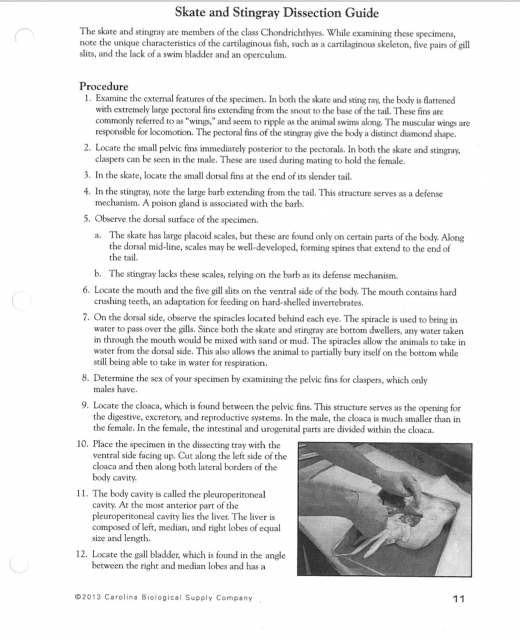
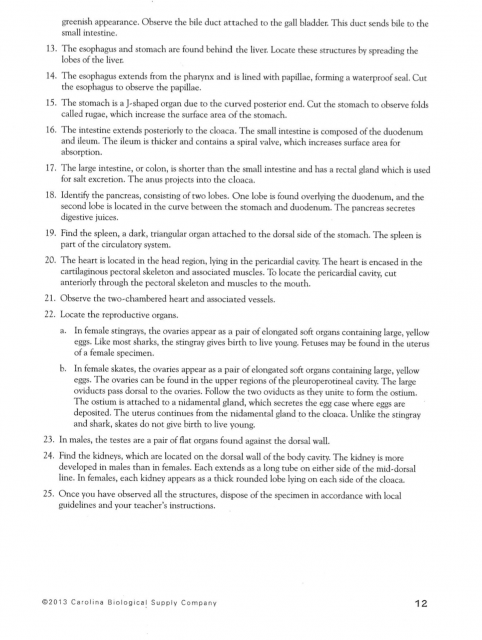
"Learn from your mistakes"
That was the name of a recent thread created by MFK guru Oddball. The thread showed a bichir that had died, and an autopsy he had performed in which he identified the organs. I was thankful he shared his experience and understood the value of it. Speaking of Oddball if you want to learn and expand your overall knowledge base search and read the 100's maybe 1000's of threads he's contributed over the past, well, decades. Endless information, take advantage that guy is an encyclopedia. I've learned more from him than possibly any other source. Big thanks to him
"Take the good with the bad"
Two days ago we had 4 pups (yay! thread on them coming soon!).
The next day we lost a hybrid female (not the mother, different tank). The hobby has ups and downs. Eventually, we experience losses. The only variable on this, is time. I feel obligated to share our failures and defeats along with our proudest moments. Can't just share new acquisitions and pretty babies, without being realistic and admitting bad things have happened along the way. If you've experienced losses you understand. If you haven't experience losses then listen. Don't give up or lose focus, you owe it to the remaining stock to learn from it and to keep improving.
Ok on to the topic at hand. This is a 5 year old female stingray of the Potamotrygon genus, of unknown hybrid species (Could speculate all day but hey...thailand...pointless to guess her DNA). The decision was made to dissect her body for several reasons:
1. Identify cause of death
2. Determine if cause of death presents a continued threat to surviving stock
2. Determine if there are any anatomical abnormalities
3. Learn more about stingray anatomy, develop a better understanding
4. Not let her die in vain (in the same sense that I am an organ donor when my grumpy ass finally dies)
Again, please note there are very graphic images in this thread. I'll share all of the background information and details/observations that I can without being too long winded. Questions? Ask them. If you're the Woozy type then click the back button on your browser. Or get a puke bucket.. or somebody get me some tissues...
The deceased was found in the morning around 8am. working backward in time. She was last seen alive and active at 11pm the night before. She refused food at her last evening feeding around 8pm behavior otherwise normal. No heavy breathing and active. She ate a moderate amount at her feeding that morning around 8am. All days previous to this behavior completely normal. The reduction of food was noticed one meal, she refused the next, and was deceased the next. Sad as she was a beautiful creature.
There are multiple male stingrays in the tank. They are all active breeder size. they have shown breeding activity to many females but never this female. This female is the alpha female in terms of aggression. She has a more "male" disposition in terms of dominance, food aggression, and biting nature. She has had one food strike in the 4 years of ownership that lasted 4 days, cause unknown, several years ago.
Suspected possible causes of death no particular order:
-Fatal barb sting
-Choked on shed barb
-Internal infection
-Possible intestinal or digestive tract blockage
-Stress related sudden instant death
-Genetic hybrid defect (read an article on this and never bookmarked it, I'll find again some day)
-Water quality (tests look flawless)
-Unknown causes (much I could be overlooking)
I'll walk through and add info and pictures as we go. I included screenshots of the guide as there wasn't a way to attach PDF. Dissection guide is here to find the origin: http://www.steinbachscience.com/l&o/resources_marine_bio/MB_Ch8/MixedFishesDissection/SkateGuide.pdf
Her tail was wrapped and taped immediately after removal from the aquarium. protective gloves were worn to prevent transfer of mucus to skin and cuts from denticles. Denticles are tiny bumps all over rays discs. Some rays have more of these than others. Some can be elongated and sharp, they can potentially cut you. Protect yourself when handling a dead ray. It can still sting and cause a world of hurt. Resist the tendency to let your guard down simply because it's deceased. Safety first.






